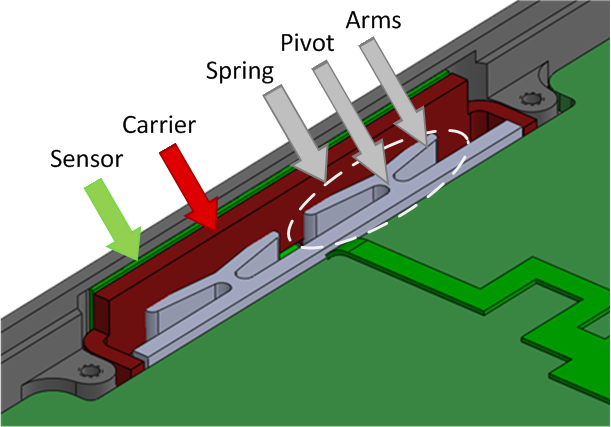SNOA961A February 2017 – February 2023 LDC2112 , LDC2114 , LDC3114 , LDC3114-Q1
- Inductive Touch System Design Guide for HMI Button Applications
- 1Mechanical Design
- 2Sensor Design
- 3Summary
- 4Revision History
1.7.2 Spring-Based
An alternative method is to use a spring-based structure to push the sensors toward the metal target. The spring arms can help to absorb unwanted movement in the vertical axis, therefore the system is less susceptible to mechanical interference due to twisting. Such a system is easier to assemble than an adhesive-based one. The disadvantage is that if the spring is attached to the PCB or the bottom of the case, pinching the location of contact may cause interference in a less rigid case. The sensor structure also takes up more space due to the additional mechanical pieces.
 Figure 1-11 Spring-Based Sensor Structure
Figure 1-11 Spring-Based Sensor Structure